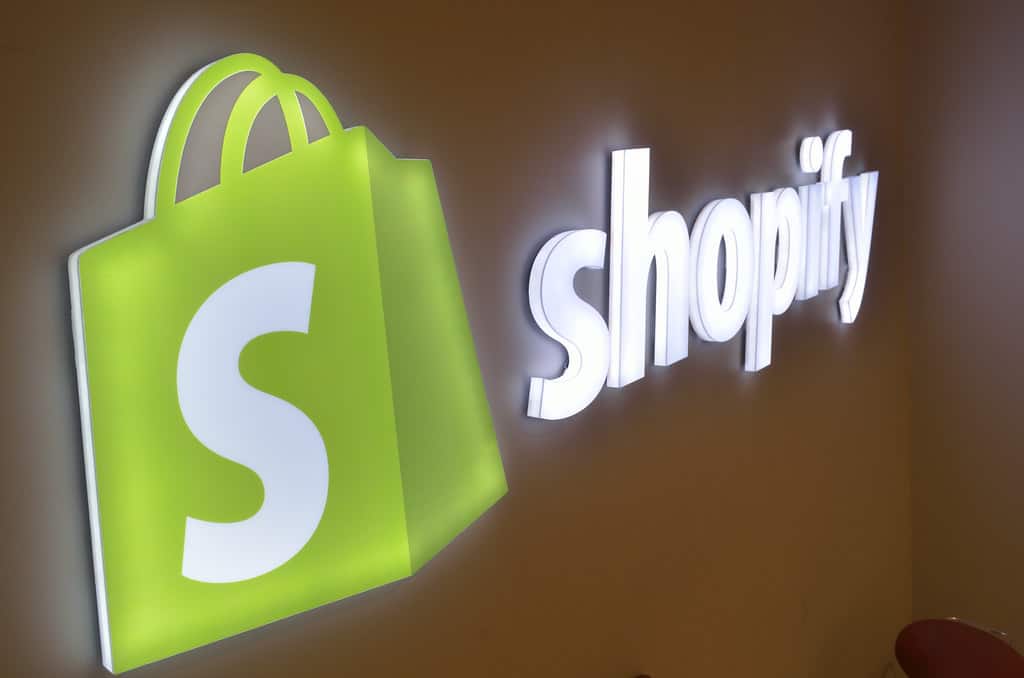
If you can believe it, even with the huge drop in share price Canadian e-commerce giant Shopify (Shopify Stock Quote, Charts, News, Analysts, Financials TSX:SHOP) is still too pricy, according to Stan Wong of Scotia Wealth Management. Wong says the stock may be worth trading but the fundamentals are still questionable.
Shopify hasn’t been a name in our portfolio It’s just quite expensive given its fundamentals and its metrics at this point,” said Wong, speaking on BNN Bloomberg on Wednesday.
Shopify shares rallied on Wednesday with the company reporting second quarter earnings and a day after announcing a ten per cent cut to its labour force amid slowing growth in online shopping. Shopify reported $1.30 billion in revenue, which represented a 13 per cent year-over-year increase, and a whopping net loss of $1.2 billion or $0.95 per share. The company said the loss included a $1.0 billion net unrealized loss on its equity and other investments. Analysts had on average been expecting revenue of $1.33 billion and positive net income of $0.02 per share.
In terms of Gross Merchandise Volume, SHOP’s Q2 featured GMV of $46.9 billion, up 11 per cent compared to a year earlier, which while still a positive in terms of growth nevertheless stands in stark contrast to previous growth rates from the company. GMV was up 52 per cent year-over-year in the second quarter of 2021 and the same figure was up 119 per cent for the Q2 2020.
“Our merchants’ GMV growth continued to outpace the growth of the broader U.S. online and offline retail markets as consumers shopped across more surfaces,” said CFO Amy Shapero in a press release. “We have recalibrated our team to build for long-term success, and will continue to operate with rigorous discipline, investing thoughtfully into the enormous opportunity ahead of us.”
Shopify’s growth trajectory mirrors the path of e-commerce uptake from the early days of the pandemic where physical stores closed and business went online to now two years later when the return to bricks and mortar is continuing — and slowing SHOP’s own growth in the process.
In a Shopify staff memo on Tuesday, CEO Tobi Lütke said he and his team had ramped up operations over the past couple of years thinking that much of the move to online commerce during COVID-19 would stick long-term, effectively accelerating the adoption of e-commerce beyond its previous pace.
“It’s now clear that bet didn’t pay off. What we see now is the mix reverting to roughly where pre-COVID data would have suggested it should be at this point,” Lütke wrote.
For Wong, investing in Shopify would require better-looking multiples that fit more in-line with the rest of the e-commerce and technology sectors.
“One of the metrics that you want to use for a lot of tech companies is to understand what the price-to-sales ratio is for a company like Shopify and other tech companies. At this point, Shopify is still trading on a forward basis of 6.5x price-to-sales. That’s still expensive at this stage,” he said.
“The last four quarters their trailing price-to-sales was at 8.39x. If you look at the P/E we’re looking at about 123x. So, I think that they still remain expensive,” Wong said. “Obviously, they’ve made a few missteps and went in too heavy during the lockdown phase and now that we’re seeing a resurgence of physical stores it has really hurt names like Shopify.”
“What that being said, maybe there’s a trading opportunity, but fundamentally I would say it’s expensive at this point,” he said.
Shopify, which completed a ten-for-one share split in June, has seen its share price decimated in recent months. The stock started sliding along with the rest of the tech sector this past November, as the market began its rotation away from growth stocks and towards more defensive areas. In Shopify’s case, the reopening of physical stores has furthered the downside, taking SHOP to a 79 per cent loss in value since the stock reached its all-time high in mid-November. That has brought SHOP to levels last seen in late 2019, effectively erasing more than two years of unprecedented gains.
Shopify made news last month when a proposal to create a differentiated “Founder’s Share” for Lütke, his family and affiliates to allow him 40 per cent voting power for as long as he stays with the company. Some argued that proposal, which passed at a shareholder vote, would concentrate power too severely, but SHOP management insisted the new structure would allow the necessary flexibility for Lütke to follow through on key growth strategies for the company.





 Share
Share Tweet
Tweet Share
Share




Comment